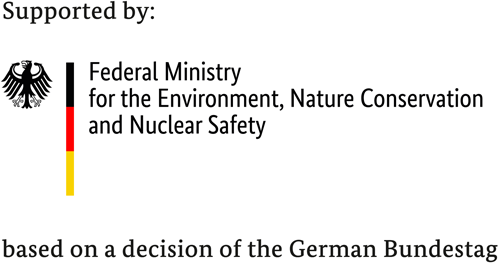Heliopolis Residence (Egypt)
General Information
A mixed-use building developed by MISRALGHAD DEVELOPMENTS and located in the heart of the vibrant district of Heliopolis near the Cairo International Airport. The project offers a variety of offices, residential and commercial units of different types.
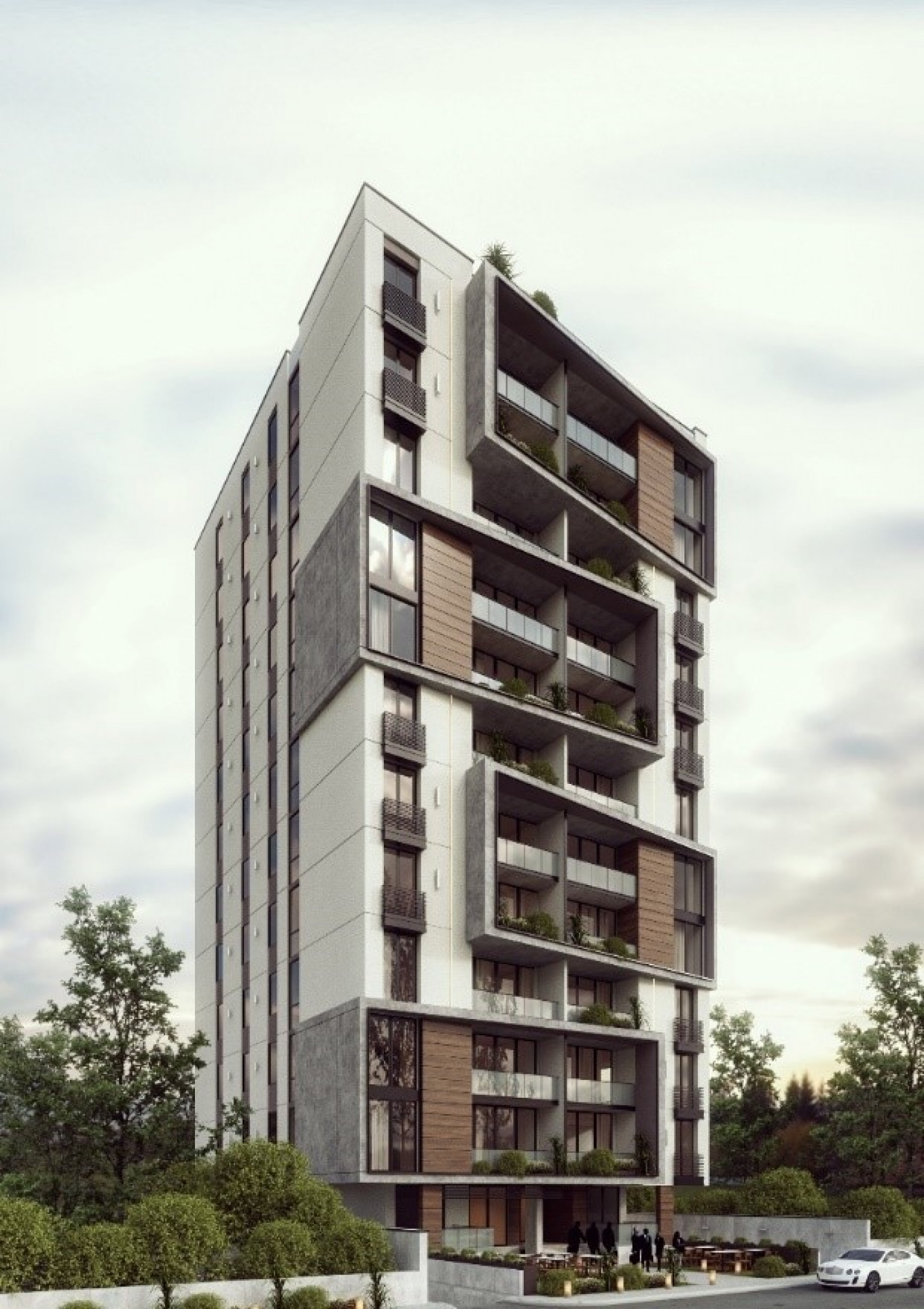
The project aims to create a mixed-use building that will offer a variety of offices, residential and commercial units of different types. Its target group is the upper middle class in Cairo. The building is composed of a diverse range of residential and commercial units. The total area is around 2,600 sqm on 12 floors. The building has 24 units with more than 170 occupants/users.
Baseline vs current situation
Comparing the baseline which represents the business as usual for the specific building type in the given country with the current planning details provided by the project developer as shown in Figure 1 it can be stated that:
- The global cost of the BAU construction of such a building are around 169 Euro/m² and with that higher than the proposed design cost which are calculated as 115 Euro/m². That is equal with global cost savings of 32%.
- Furthermore, the proposed design is more energy efficient in comparison to the BAU cases (final energy savings of 38%).
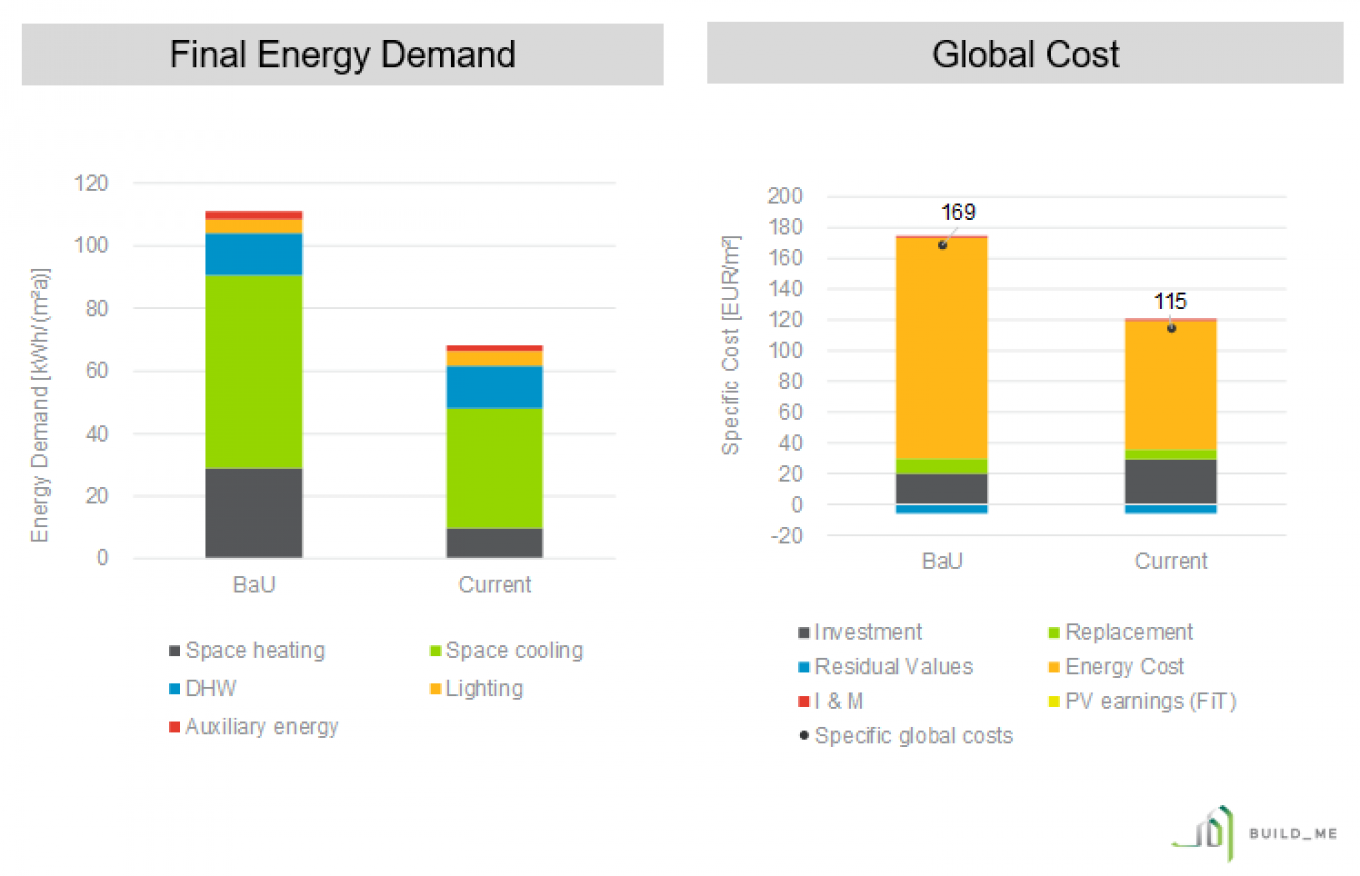
Optimized Solution
The analysis of the cost optimal energy efficiency and renewable energy measures have resulted in the following key components illustrated in the table below as shown in Figure 2. It shows that the building envelope is significantly enhanced compared to the business as usual and current plan. Special attention is given to the use of renewable energy sources in terms of PV (for electricity). This leads to energy savings and emission reduction.
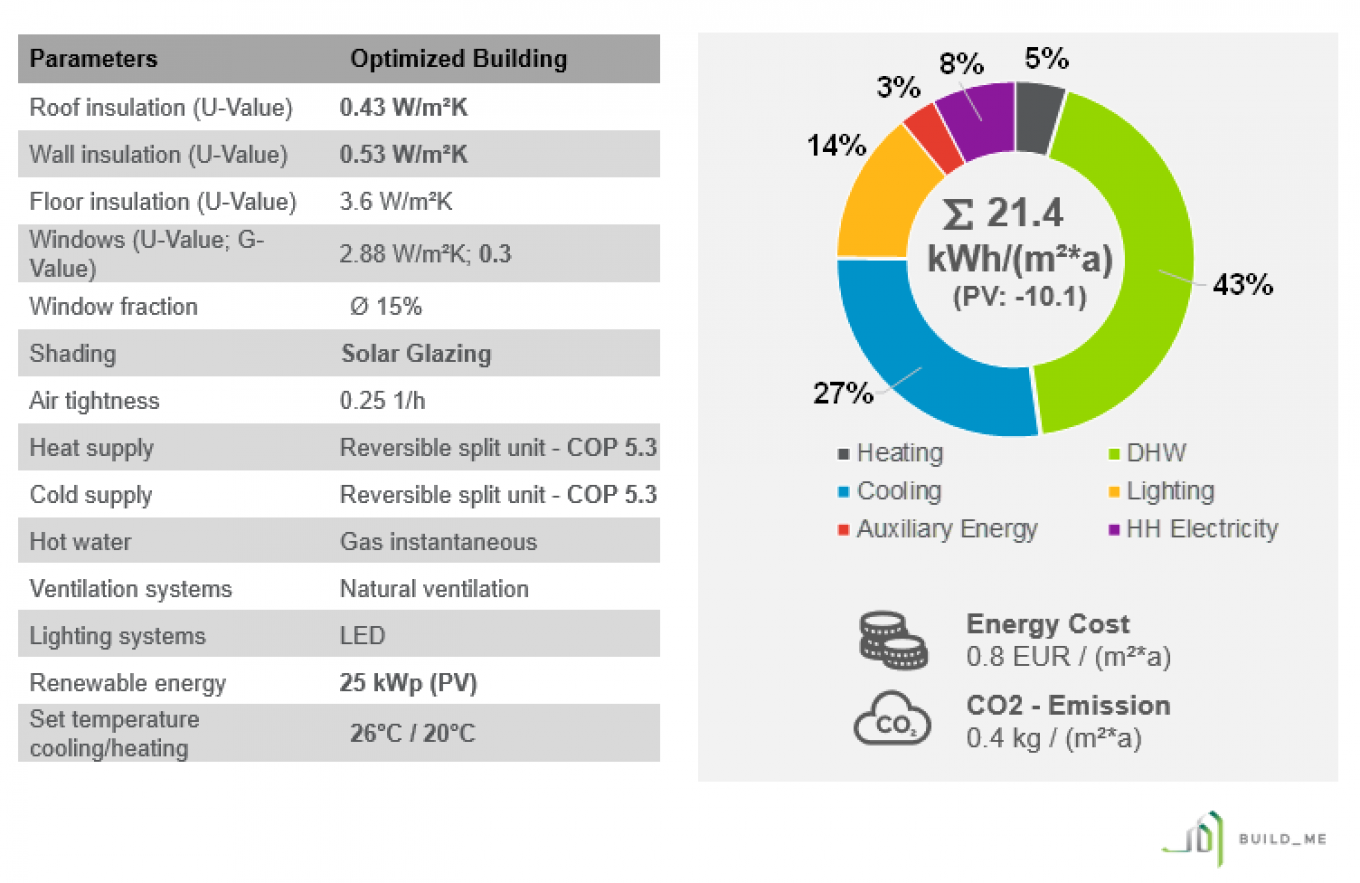
Selected solution
After the exchange with the project developer, the following components have been assessed as feasible and will be taken into account in the further planning (also illustrated in the table below marked in bold as shown in Figure 3):
- Improvement of the building envelope
- Solar Glazing
- Higher efficient VRF system
- PV on the roof
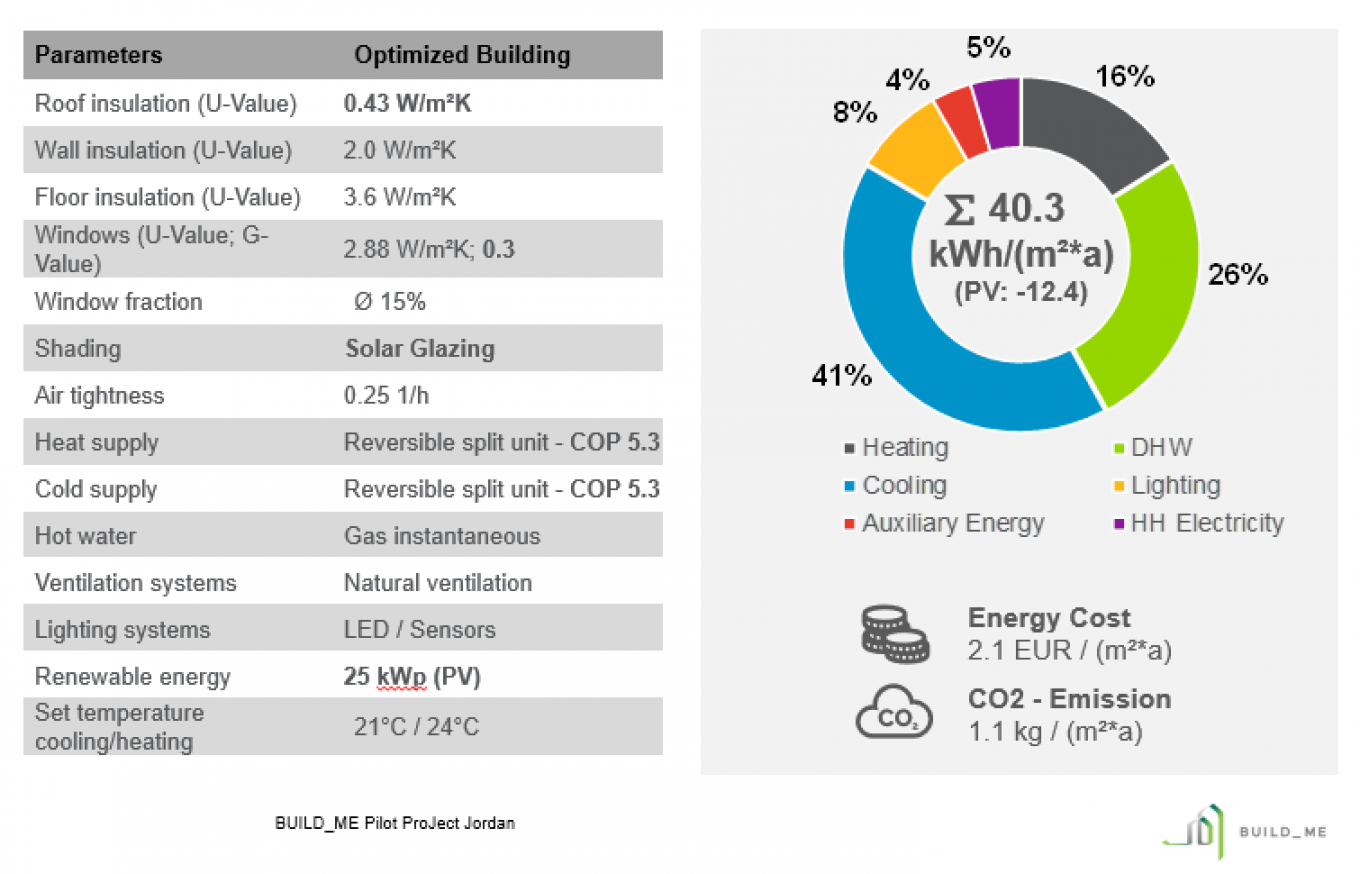
Results
The suggested measures of the selected package and the optimized lead to a significant decrease in energy demand and cost savings as shown in Figure 4. The energy savings of the selected package range between 55 % compared with the baseline (BaU), while in terms of global costs savings 46% can be achieved by the selected package.



